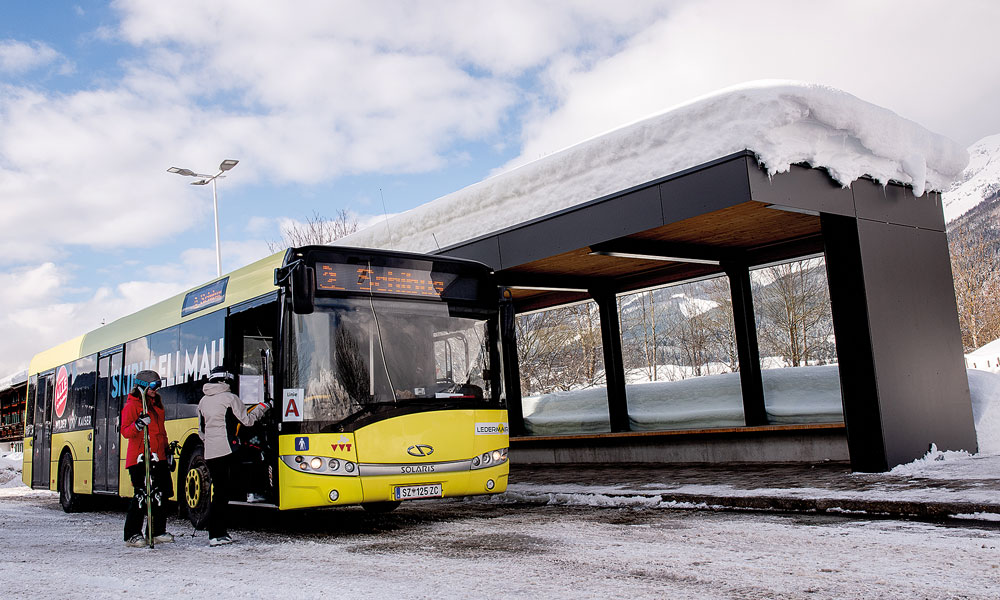Dynamic publication, visualisation and contextualisation of historic documents more
Tag ‘e-Culture’
Projekte
DigiCULT – Technological Landscapes for Tomorrow’s Cultural Economy
A strategic study on the digital cultural economy for the European Commission, DG Information Society more
nowledge management for the House of World Cultures
Implementation of an archive system that allows for easy reuse of digital assets for new cultural events, products and services more
QVIZ – Query and context based visualization of time-spatial cultural dynamic
QVIZ is an European research project started in order to enhance user access to European National Archive material by providing spatial-temporal query visualization environment based admininistrative units and other facets; and a collaborative community tools for social knowledge building in order to further enhance access to materials in a more diverse semantic network. more
DigiCULT Forum – The Technology-Watchdog for European Cultural Heritage
Monitoring of digital Technologies with Relevance to the Cultural Heritage Sector. more
Hist.Urban – Integrated Revitalization of Historical Towns to Promote a Polycentric and Sustainable Development
New and interdisciplinary urban planning strategies and procedures more
REGNET – Cultural Heritage in Regional Networks
Development of an infrastructure for business processes of cultural heritage organisations more
CULTOS – Cultural Units of Learning, Tools and Services
Authoring and knowledge management tools for cultural multimedia more
COVAX – Contemporary Culture Virtual Archives in XML
Development of XML based applications for publication and distributed access to archival records more
DigiCULT.Info V.
ARKive and educational games –, human language technologies –, introduction to Applications Service Providers –, astronomical photo archive, interview with Jean-Pierre de Cuyper –, news for European projects –, DAVID –, DELOS –, E-CultureNet –, open source solutions –, digitisation in Turkish libraries –, Open Video Archive.
Please welcome to the next edition in a series of e-journals from DigiCULT. Heritage Informatics continues to emerge as an exciting area for both the application of new technologies and as a source for research challenges that promote innovative technological developments.
An extra day in Berlin after IFLA2003 provided an opportunity to visit the Museumsinsel, one of the finest museum complexes in the world. Currently many of its buildings are undergoing extensive renovations. As on my right I passed the reopened Alte Nationalgalerie I noticed one of the buildings currently wrapped for restoration was covered by a massive poster. In the words Weltkultur beflügelt (world culture gives wings) it asks all who pass to consider the liberating power of the cultural heritage. Articles in this issue of DigiCULT.Info all show the power of new technologies in helping cultural heritage institutions in achieving their objective of improving the care, understanding and benefits of cultural heritage to individuals and society. Reflecting on the phrase Weltkultur beflügelt, we are reminded that technology is an enabler and not an end in itself.
Seamus Ross
DigiCULT.Info VI.
DigiCULT introduces our regional correspondents – using 3D technologies in heritage projects – content management – new open source tools – action in the preservation of memory – the object of learning – IRCAM digital sound archive – our knowledge society – news and events.
DigiCULT Thematic Issue VI.
This sixth Thematic Issue concentrates on how resource discovery technologies can ensure that the high value, authoritative information of heritage institutions is effectively found, retrieved, and presented to Internet users.
With a key focus on the user, the Issue looks into user-driven approaches in interactive resource discovery. Expert opinion suggests that offering easy to use services and tools able to integrate the research and learning needs and behaviours of their users may form one of the heritage institutions, answers to the dominance of general-purpose global search engines.
However, along with ensuring state-of-the-art interactive access and presentation, the heritage sector will also need to raise the public’s awareness to, and visibility of, its online resources in a more profound manner. Otherwise it faces the risk that the large investment required in creating digital collections, rich descriptive metadata, study and learning material, will fail to realise a high return – in terms of interest and appreciation, discovery and valuable uses of heritage resources.
DigiCULT.Info VII.
Replica of La Dama de Elche using 3D scanning and printing technologies – DigiCULT user survey – projects on e-learning – Spanish archives on the Web – interview with Susan Hazan – digitisation projects in Italy – interview with Paolo Buonora – more from DigiCULT’s Regional Correspondents
Digital Cultural Heritage Networks.
In December 2002, representatives of European digital cultural heritage networks and projects met in Strasbourg at the Council of Europe to consult with council members on the most pressing issues related to the rapidly growing amount of digital cultural assets.
One of the major problems identified has to do with the fragmented and in many respects uncoordinated approach of networks and projects concerned with digital cultural heritage. Many initiatives work in parallel on the same or related problems with little exchange. Especially at the crossdomain level, information exchange and co-operation has not yet reached the desired degree to avoid double work and to ensure the most effective use of the anyway limited financial resources available to the cultural heritage sector. Therefore, the participants of the Strasbourg meeting decided to conduct a survey of networks to get a substantiated view on who is doing what and at which level in the European digital cultural heritage sector. The survey should finally help to identify those visionaries, opinion leaders and decision makers from digital cultural heritage networks that should be further involved in the Council of Europe consultation process on digital cultural heritage.
Online database: http://www.european-heritage.net/sdx/herein/doc_dcn/dcn_presentation.xsp
Assessing the Readiness of Small Heritage Institutions for e-Culture Technologies
As we progress towards a knowledgebased information society, a digital culture is emerging. This e-culture will be based on technologies that enhance the creation, management and provision of attractive cultural content and engaging interactions on a variety of platforms. This article addresses the endeavours of small heritage institutions to prepare themselves for e-culture, while facing the “trilemma” of lacking human resources, lacking funds, lacking technical skills. It concentrates on the question: Which current and emerging technologies are most likely to find a broader adoption by large, medium and small institutions? It provides a classification of these sizes based on empirical data, and points out key issues that heritage institutions will need to consider when assessing the feasibility of adopting a certain technology. Based on this ?e-readiness check?, the paper assesses 20 technologies especially from the perspective of smaller institutions. These technologies have been monitored in the DigiCULT Forum project, and include, for example, virtual reality, agents and avatars, digital asset management, mobile technologies, RFID technology, customer relationship management, virtual community and collaboration technologies. Although some of the technologies may be used by smaller institutions, the article concludes that these institutions may only become ?e-ready? for, and benefit from, most of the technologies within a framework of larger cultural heritage initiatives.
In such initiatives, funded mechanisms such as cultural networks/service centres enable smaller institutions to keep their costs and risks manageable while not being excluded from new technological developments.
DigiCULT.Info IX.
Examinging digital contextualisation for knowledge acquisition – reproducing Greek masks for performance – Austrian digital heritage – news from DigiCULT’s Regional Correspondents – examining technologies and cultural heritage – Te Ara digital encyclopedia – thoughts on born-digital art – DiVA academic archive – new guides on digitisation – DSpace in a university trial – event reports
DigiCULT Thematic Issue VII.
This report summarises the results of an expedition into the possible future of digital heritage in the next 10-15 years. It is based on contributions of researchers, heritage experts and professionals to a DigiCULT online forum as well as the project’s ongoing research. The report is intended as a navigation tool for boards and directors of heritage organisations and research centres, IT project managers, and curators of digital collections, virtual exhibitions and environments. It cautions that the next waves of innovative ICT systems and applications may significantly shape and re-shape the digital landscape in which heritage organisations reside. For many organisations this could result in becoming ‘blind spots’ in an emerging ambient intelligence environment. As the places and roles of digital heritage in this environment need to be discussed and prepared, the report also gives recommendations which may be useful for ensuring the creation of a thriving and inclusive future digital heritage space.
DigiCULT Thematic Issue V.
This fifth Thematic Issue concentrates on the question of how heritage institutions might benefit from fostering virtual communities related to core activities such as exhibitions, educational programmes or in support of scholarly communities.
There is growing volume of evidence to suggest that cultural heritage institutions’ adoption of virtual communities will broaden the reach, value and relevance of cultural heritage. The vision to link the collections and work of heritage insitutions with virtual communities promises to considerably change the way we access, communicate about, share our understanding of, and participate in the experience of cultural heritage.
But, for most cultural heritage institutions, the challenge will be first to embrace the idea of co-operating with a (non-professional) online community, and then to nurture an evolving and thriving community that crosses the virtual as well as physical space.
DigiCULT Technology Watch Report 2.
Der DigiCULT Technology Watch Report 2 ist der zweite von insgesamt drei Technologie-Reports, die im Rahmen des EU-Projektes DigiCULT Forum (bis 08/2004) publiziert werden.
Verschiedenste IT-Technologien werden vorgestellt und hinsichtlich ihrer Relevanz für den Kulturerbesektor vorgestellt. Gerade für kleinere Kulturinstitutionen (und 95% sind klein) bietet dieser Report eine neutrale und kompakte Informationsquelle und Entscheidungshilfe für Entscheidungsträger in Archiven, Bibliotheken und Museen ohne kommerziellen Hintergedanken.
Folgende Technologien werden ausführlich beschrieben, mit herkömmlichen Standards und Methoden verglichen und samt Vorteilen und potenziellen Risiken für den Kulturerbe-Sektor bewertet:
– The Application Service Model
– The XML Family of Technologies
– Cultural Agents and Avatars, Electronic Programming Guides and Personalisation
– Mobile Access to Cultural Information Resources
– Rights Management and Payment Technologies
– Collaborative Mechanisms and Technologies
Digital Collections and the Management of Knowledge:
It is with great pleasure and honour to publish alongside our series of DigiCULT Publications a special edition on the digitization of emblem books. The twelve articles by distinguished experts stem from the working conference on emblem digitization held in September 2003 at the Herzog August Bibliothek, Wolfenbüttel, Germany. They allow us to exemplify how scholars in a highly specialised area of research together with digital librarians have taken advantage of information technologies, standards, and emerging best practices for the digitization of emblems and emblem books, and the scholarly work related to them. In this volume readers will find valuable information as well as encouragement for their own projects in digitizing cultural heritage resources and digitally enhanced scholarship.
Stütze für regionales Kulturerbe
Wie begegnen Kulturinstitutionen der “digitalen Herausforderung”? Halten schon bald modernste Informations- und Kommunikationstechnologien in den Kultureinrichtungen Europas Einzug? Ermöglicht der Einsatz der neuen Medien im Kultursektor neue Geschäftsmodelle? Wie kann die technologische Kluft zwischen den Leitbetrieben zur Bewahrung des Kulturerbes, etwa Nationalbibliotheken und -archiven, und kleinen Kulturinstitutionen geschlossen werden?
Im März 2003 endete das zweijährige EU-Forschungsprojekt REGNET. Ziel war die Entwicklung und Erprobung von Technologien für regionale
Kultur-Servicezentren. Das Projekt leistete damit einen Beitrag zur Umsetzung von Empfehlungen, die parallel dazu (aber unabhängig voneinander) in der EU-Leitstudie DigiCULT im Bereich der digitalen Kultur erarbeitet wurden.
Artikel erschienen in NOEO, dem Wissenschaftsmagazin Salzburger Forschungs- und Bildungseinrichtungen.
NOEO erscheint vierteljährlich als Beilage zum österreichischen Wirtschaftsmagazin “Trend” und “Spektrum der Wissenschaft (Österreich)” sowie im Eigenvertrieb. Auflage: 48.000 Stück.
Beteiligte Institutionen: Universität Salzburg, FH Salzburg GmbH, Universität Mozarteum, fh.sozialarbeit und Salzburg Research.
DigiCULT.Info IV
Focus on the use of 3D visualisation technologies in archaeological study – the emulation of BBC Domesday – introduction to LESTER and ESDS – a discussion of the YLE sound archive.
Welcome to the fourth DigiCULT.Info. This issue focuses on the following topics:
The rescue of the BBC Domesday project, which provides an important look into the dangers of technological obsolescence, and consequent struggle to unlock the data. The results of the ORION survey, which point to a stronger than expected take-up of 3D in archaeology museums.
YLE, Finland’s national public service broadcasting company, has adopted a full digital radio archive solution, in this article they share their experience in designing and creating this digital sound archive. Lisa Spiro introduces the Learning Science and Technology Repository (LESTER), a gateway to events, discussion and information in the development of learning technologies.
The article “Digital Object Identifier System” examines how DOIs can help to manage intellectual property in the digital environment.
Finally, the “News in the Spotlight” section includes amongst others: business models of news website, the US National Plan for preserving digital information, and, a report on preserving e-mail.
Lara Croft auf Hohensalzburg
Ein deutlich erkennbarer Trend in der Spiele-Industrie ist die
Entwicklung von Computer-Spielen mit historischem Setting.Dies eröffnet die Möglichkeit, Kulturerbe neuen Zielgruppen nahe zu bringen. Mittels digitalem Edutainment kann das Interesse am realen
Kulturgut geweckt werden. Wertvolle Informationen zu Spiele-Technologien und weitere für den Kultursektor relevante digitale Technologien liefert das von Salzburg Research koordinierte EU-Projekt DigiCULT Forum.
Artikel erschienen in NOEO, dem Wissenschaftsmagazin Salzburger Forschungs- und Bildungseinrichtungen.
NOEO erscheint vierteljährlich als Beilage zum österreichischen Wirtschaftsmagazin “Trend” und “Spektrum der Wissenschaft (Österreich)” sowie im Eigenvertrieb. Auflage: 48.000 Stück.
Beteiligte Institutionen: Universität Salzburg, FH Salzburg GmbH, Universität Mozarteum, fh.sozialarbeit und Salzburg Research.
Digitales Zeitalter bedroht kulturelles Gedächtnis
Wie groß ist das Risiko, das neue Technologien für die Erhaltung des (digitalen) Kulturerbes darstellen? Die Kulturinstitutionen stimmen überein: Es ist sehr groß. Technologien kommen und gehen mit derartiger Schnelligkeit, dass sie die Langzeitarchivierung
von digitalen Inhalten in Frage stellen.Wie kann dieses Problem
sinnvoll angegangen werden? Neun ExpertInnen – Archivare, Bibliothekare, Technologen und Akademiker – diskutierten diese Frage beim 1. DigiCULT Forum in Barcelona im Mai 2002.
Artikel erschienen in NOEO, dem Wissenschaftsmagazin Salzburger Forschungs- und Bildungseinrichtungen.
NOEO erscheint vierteljährlich als Beilage zum österreichischen Wirtschaftsmagazin “Trend” und “Spektrum der Wissenschaft (Österreich)” sowie im Eigenvertrieb. Auflage: 48.000 Stück.
Beteiligte Institutionen: Universität Salzburg, FH Salzburg GmbH, Universität Mozarteum, fh.sozialarbeit und Salzburg Research.
DigiCULT Thematic Issue IV.
Heritage institutions need to improve their relevance for the education sector and lifelong learners in attractive, efficient, and sustainable ways. Simply displaying collection objects, considered useful for informal learning in some way or another online, is not enough.What is called for are learning objects: highly interoperable and reusable modular building blocks for e-learning content based on widely shared specifications or standards.
Provision of such objects, demands closer collaboration between the heritage and e-learning sectors, that concentrates on the enhancement of e-learning interoperability, both in terms of technical standards and in terms of appropriate forms of learning. DigiCULT regards such collaboration as crucial to unlocking the richness and diversity of Europe’s cultural and scientific heritage for e-learning within our knowledge-based society.
DigiCULT Publications offer a valuable resource of mission-critical information in the selection and use of digital technologies for Europe’s heritage organisations.
DigiCULT Technology Watch Report 1
Der DigiCULT Technology Watch Report 1 ist der erste von insgesamt drei Technologie-Reports, die im Rahmen des EU-Projektes DigiCULT Forum (bis 08/2004) publiziert werden.
Verschiedenste IT-Technologien werden vorgestellt und hinsichtlich ihrer Relevanz für den Kulturerbesektor vorgestellt. Gerade für kleinere Kulturinstitutionen (und 95% sind klein) bietet dieser Report eine neutrale und kompakte Informationsquelle und Entscheidungshilfe für Entscheidungsträger in Archiven, Bibliotheken und Museen ohne kommerziellen Hintergedanken.
Folgende Technologien werden ausführlich beschrieben, mit herkömmlichen Standards und Methoden verglichen und samt Vorteilen und potenziellen Risiken für den Kulturerbe-Sektor bewertet:
– Customer Relationship Management
– Digital Asset Management Systems
– Smart Labels and Smart Tags
– Virtual Reality and Display Technologies
– Human Interfaces
– Games Technology
The DigiCULT Report
The DigiCULT-Report provides a roadmap for orientation on the future trends in the European cultural heritage sector in the next five years. It aims to help decision makers how to best face the future challenges related to building and exploiting a digital cultural landscape within the Information Society.
Today, archives, libraries and museums all over Europe face similar challenges as they try to take advantage of the enormous potential the use of information and communication technologies promises for memory institutions. These challenges are not only technical in nature, but affect cultural heritage institutions at their very core:
How do new technologies affect the core business and how can they be best integrated into the current workflow?
Which new technologies can be expected and how can cultural heritage institutions avoid to jump on the wrong technological bandwagon?
What kind of institutional changes are needed to adopt and adapt new technologies?
How can small institutions manage to participate in the emerging Information Society?
What is the potential to commercially exploit cultural heritage resources and what are the future markets?
What is needed to make cultural heritage services sustainable?
These are some of the questions that form the basis of this strategic study.
The DigiCULT study is based on the analysis of expert opinions in the cultural heritage sector. To reach a broad consensus across the cultural heritage sector, more than 180 international experts from archives, libraries and museums, as well as policy makers and representatives from special interest groups and research facilities in Europe, the United States, Canada and Australia were involved in the study over the past seven months.
In 29 interviews, 6 Expert Round Tables (ERT), and an online Delphi survey, they gave their opinions on future trends in the cultural heritage sector. Furthermore, they provided recommendations that allow actors in the institutions as well as policy makers to take appropriate measures to create favourable conditions for future development of the cultural heritage sector.
Download:







